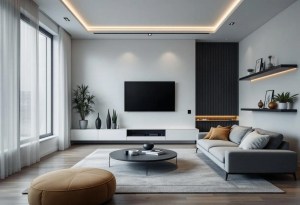We architects? We like to think we’re shaping the world, right? With our designs, our vision. But let’s be real for a second. How often do we really listen to the folks who are going to live, work, and play in those spaces? From my time at SOM to what I’m doing now at Bellweather Design Studio, I’ve learned one big thing: the best buildings aren’t just pretty; they’re born from the voices of the community.
Why Bother with Community Input?
Seriously, think about it. Who knows a neighborhood better than the people who live there? They get the little things, the unspoken needs, the vibe of the place. Ignoring that? It’s like throwing away a goldmine of information. You end up with buildings that just don’t fit. Community engagement? It’s about respecting that local know-how.
Participatory design isn’t some fluffy, feel-good exercise. It’s about building smart. It means your project actually makes sense for its surroundings, respects the local culture, and lasts. When people feel heard, they take pride in the project. They support it. That’s a win-win.

Okay, How Do We Actually Do It? Principles of Participatory Design
So, how do you get real community input that makes a difference? Here are a few things I’ve learned along the way:
- Start Early, Keep Going: Don’t wait until the last minute. Get the community involved from day one. The sooner they’re in, the bigger the impact they can have.
- Get Everyone in the Room: Make sure you’re hearing from all voices. Don’t just listen to the usual suspects. Reach out to those who are often overlooked.
- Be Open, Be Honest: Keep everyone in the loop. Tell them what’s happening, how their input is being used. Don’t sugarcoat the challenges.
- Really Listen: This isn’t just checking a box. Actually listen to what people are saying. Be ready to change your plans based on what you hear.
- Keep the Conversation Going: Create ways for people to share their thoughts throughout the whole process. Workshops, surveys, online forums-whatever works.
Real-World Wins: Community-Driven Architecture
Let’s talk examples. Where does this actually work? The revitalization of Pilsen in Chicago comes to mind. By working with the community and local artists, the designers created a public space that celebrates the neighborhood’s culture. It wasn’t just a facelift; it boosted community pride.
And then there’s the High Line in New York City. It started as a cool design idea, sure. But community advocates stepped in and pushed for things like public art, gardens, and educational programs. Now it’s a space everyone can enjoy.
Why Bother? The Real Benefits
This isn’t just about making things look nice. Involving the community leads to:
- More Sustainable Projects: Local folks know what works in their environment. That means better choices for energy and water use.
- Culturally Relevant Designs: Make sure your building reflects the local culture and history. It’s about respect.
- Stronger Communities: When people work together on a project, they feel more connected.
- Projects That Last: If the community loves it, they’ll support it. And that means it’s more likely to succeed.
The Tricky Parts: Challenges and How to Handle Them
Okay, it’s not always sunshine and roses. You’ll face disagreements, limited budgets, and logistical nightmares. Be ready for it. Here’s how:
- Get a Good Facilitator: Someone who can keep the peace and make sure everyone gets a chance to speak.
- Be Ready to Resolve Conflicts: Find common ground. Mediate disagreements.
- Be Realistic: Don’t promise the moon. Be upfront about what you can and can’t do.
- Be Flexible: Be willing to adapt your plans based on what you hear from the community.
Let’s Do This: A Call to Action
This isn’t just a trend. It’s our job as architects and planners to listen to the community. By embracing participatory design, we can create spaces that are beautiful, functional, and meaningful. So, on your next project, get out there. Listen to the people. Let their voices shape your designs. Together, we can build a better world for everyone.
FAQ – Your Questions Answered
Q: What if people can’t agree?
A: That’s normal! A good facilitator can help find common ground. Be transparent and communicate clearly.
Q: How do I reach those who don’t usually participate?
A: Try different things! Online surveys, community events, working with local leaders.
Q: Is this going to cost a ton of time and money?
A: It’s an investment, sure. But a successful project that the community loves? That’s worth it. Plus, getting input early can prevent costly changes later.
Q: How do I make sure community input actually makes it into the design?
A: Keep track of all feedback. Explain how you’re using it (or why you can’t). Keep the lines of communication open.


